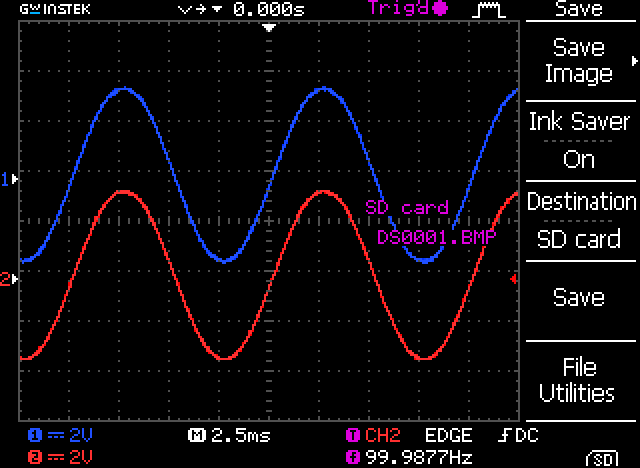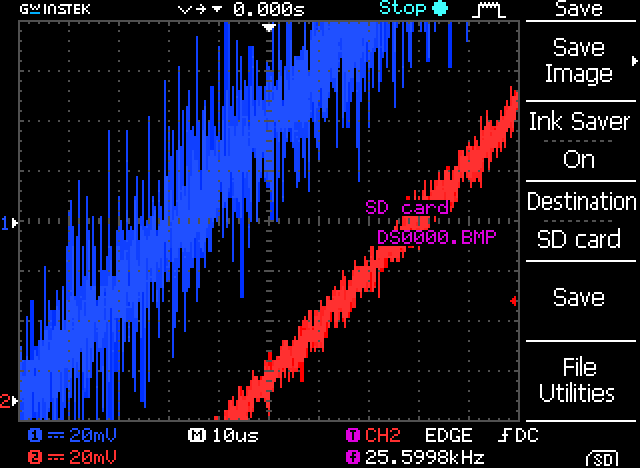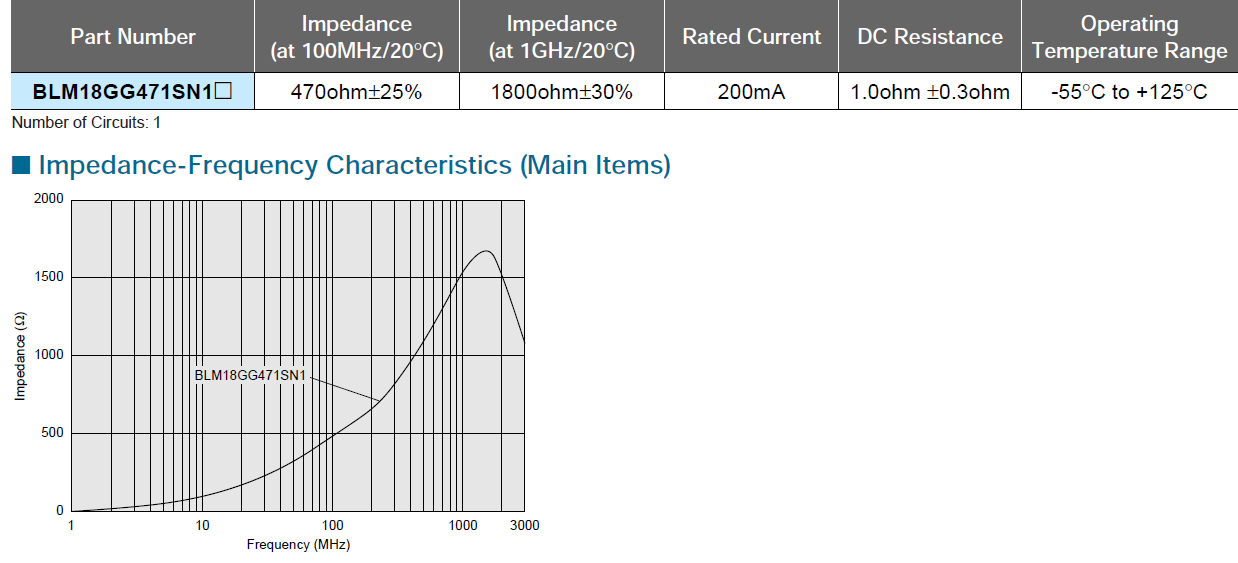Hi George
Right now I just listening via CDP direct out into BUF.
With CDP out without BUF in way the sound is not as
forward.
Right now I just listening via CDP direct out into BUF.
With CDP out without BUF in way the sound is not as
forward.
You could do a VC by using an upsidedown pot instead of a resistor to ground on the TZ pin of the AD844, the only trouble is that the filter cap would have to change it's value as well to give the same HF filtering you set, but that can be done permanently on the buffer stage instead as it's only first order.
It's a pretty hairy place to do it, as if the pot goes open circuit you'll have massive gain, by-by amp and speakers.
Anyone game to try it????
Cheers George
It's a pretty hairy place to do it, as if the pot goes open circuit you'll have massive gain, by-by amp and speakers.
Anyone game to try it????
Cheers George
Last edited:
Hi guys,
I just want to report that I've improved my I/V stage again. My current setup is based on OPA861, but I am sure it will work on AD844 also. As some of the experts here had mentioned that HF garbage from R2R DAC is unwanted and could upset the op amps easily, so I decided to do some experiment myself. I searched the catalog of Murata ferrite beads and found this special BLM18GG471SN1 is worth a try. To my surprise, the result is phenomenal. The smoothness is improved and more details is revealed. No side effect is found. As a ferrite bead could add 1 ohm DC resistance on signal path, but I think it's absolutely worth it. Here are the signals on my oscilloscope (GDS-1062A with 500Mhz probe). As for comparison, one channel is fitted with BLM18GG471SN1 and the other is from original circuit. The effect is pretty obvious.
Test signal: 100Hz sine 0dBfs

Result

BLM18GG471SN1

I just want to report that I've improved my I/V stage again. My current setup is based on OPA861, but I am sure it will work on AD844 also. As some of the experts here had mentioned that HF garbage from R2R DAC is unwanted and could upset the op amps easily, so I decided to do some experiment myself. I searched the catalog of Murata ferrite beads and found this special BLM18GG471SN1 is worth a try. To my surprise, the result is phenomenal. The smoothness is improved and more details is revealed. No side effect is found. As a ferrite bead could add 1 ohm DC resistance on signal path, but I think it's absolutely worth it. Here are the signals on my oscilloscope (GDS-1062A with 500Mhz probe). As for comparison, one channel is fitted with BLM18GG471SN1 and the other is from original circuit. The effect is pretty obvious.
Test signal: 100Hz sine 0dBfs

Result

BLM18GG471SN1

Last edited:
does it make the iv stage a two pole filter (with one L and one C)? it surely lowers HF quantization noise but I am not sure how it improve SQ
Hi Canvas
Do you mean to install the bead after I/V or ???
Thks
No, before the I/V. Just right after DAC output, at the input of your AD844.
does it make the iv stage a two pole filter (with one L and one C)? it surely lowers HF quantization noise but I am not sure how it improve SQ
Hi quantran,
I'm not an expert. Why not try it and let us know your opinion. I am not saying this is a total solution, but it works for me. Maybe the unwanted HF spectrum will affect the linearity of some sort.
Im curious about this too will order a couple
to try . My dac is Nos so wondering if it will
improve SQ. Pass experience with beads is that
it darkens the sound be it in power supplies etc.
Cleaner yes & at times even constrain the timbre
Anyway will give it a go
Thks for sharing
to try . My dac is Nos so wondering if it will
improve SQ. Pass experience with beads is that
it darkens the sound be it in power supplies etc.
Cleaner yes & at times even constrain the timbre
Anyway will give it a go
Thks for sharing
Im curious about this too will order a couple
to try . My dac is Nos so wondering if it will
improve SQ. Pass experience with beads is that
it darkens the sound be it in power supplies etc.
Cleaner yes & at times even constrain the timbre
Anyway will give it a go
Thks for sharing
Since we are dealing with AC current here, the bead may have different effect.
Hi quantran,
I'm not an expert. Why not try it and let us know your opinion. I am not saying this is a total solution, but it works for me. Maybe the unwanted HF spectrum will affect the linearity of some sort.
It's certainly worth to try. I was just thinking out loud. However its not economical for me to place an overseas order for just two ferite beads.
Hi Canvas, this noise you've measured and reduced from the dac with a ferrite bead. That was the TDA1541 right?? As I've not seen this amount of noise coming from the PCM1704.
Cheers George
Cheers George
Hi Canvas, this noise you've measured and reduced from the dac with a ferrite bead. That was the TDA1541 right?? As I've not seen this amount of noise coming from the PCM1704.
Cheers George
Hi george,
No, it's from my AD1860. I don't have PCM1704 or TDA1541. They may be better in this regard. However, I'm curious about your PCM1704. Would you mind posting your measurement? Thanks.
Last edited:
With the simple first order filter on the TZ resistor for -3db at 150khz and I also did the same on the feedback of the OPA627.
On the Tek scope I only saw had a couple of uV of HF noise on the rca outputs.
Without these two first order filters there was for memory around 10 x more.
And absolute dead quiet even with your ear to the speaker at full volume.
I do think the PCM1704 has a very quiet output for a dac.
As a mates TDA1541 hissed like a snake with his simple resistor I/V +buffer
Cheers George
On the Tek scope I only saw had a couple of uV of HF noise on the rca outputs.
Without these two first order filters there was for memory around 10 x more.
And absolute dead quiet even with your ear to the speaker at full volume.
I do think the PCM1704 has a very quiet output for a dac.
As a mates TDA1541 hissed like a snake with his simple resistor I/V +buffer
Cheers George
Hi George,
How did you measure the uV scale from a scope? Did you use pre-amplifier? The best vertical resolution I've heard is 500uV/DIV. There should be better ones, but I think it's out of reach for most people.
A couple of uV noise from PCM1704 is quite impressive which made me thinking of replacing my AD1860 immediately ^_^. BTW, I didn't hear any noise from my tweeter, even before the mod. I guess the noise does come from the switching circuit inside the DAC. With silent data, it's quiet.
How did you measure the uV scale from a scope? Did you use pre-amplifier? The best vertical resolution I've heard is 500uV/DIV. There should be better ones, but I think it's out of reach for most people.
A couple of uV noise from PCM1704 is quite impressive which made me thinking of replacing my AD1860 immediately ^_^. BTW, I didn't hear any noise from my tweeter, even before the mod. I guess the noise does come from the switching circuit inside the DAC. With silent data, it's quiet.
Last edited:
My scope for memory(2465B) get's down to 1mV per division with 10 segments per division, and I used the 10x on the scope and the probes to view it..
Cheers George
Cheers George
Last edited:
1mv/DIV spec is usually with 1X probe. With 10X probe, the resolution is now 10mv/DIV if I'm not mistaken. Anyway, your 1704 shows much less noise than 1860 which is a good thing. I have AD1862 and the board. I will try to measure it after I build the DAC.
- Home
- Source & Line
- Digital Line Level
- Using the AD844 as an I/V
